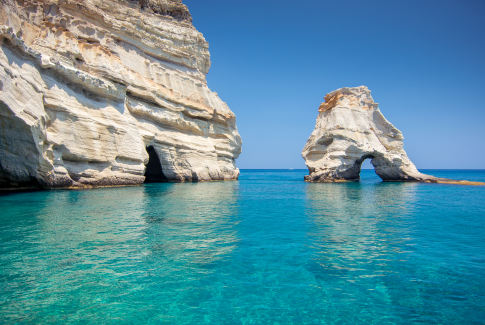
Once the shelter of pirates, Kleftiko beach is a hidden gem, only accessible by boat. The famous cove of Kleftiko was an old pirates’ hideout and now one of the most popular tourist attractions in Milos island. Kleftiko is famous for its crystal-clear water, elaborate caves and imposing rock formations. On the southwest tip of Milos island, Kleftiko is only accessible by boat. Swim, snorkel, soak up the sun — it’s all on the docket at Kleftiko beach.
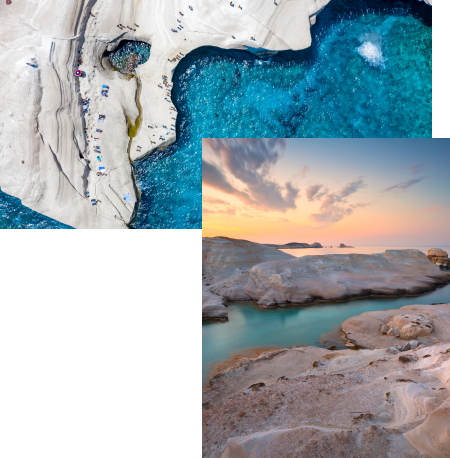
At Sarakiniko Beach on Milos, wind-hewn valleys meander their way down to a turquoise sea, while sea stacks, caves and elegantly curved cliffs arch over the waves. And everything shines white under the bright Aegean sun. According to local lore, pirates once sought refuge on the beach and hid their treasure in tunnels hand-carved at the base of the rocks. Here you can swim, sunbathe, cliff dive and explore tunnels and a shipwreck – or just gaze at a natural wonder that feels more like the moon than Greece.
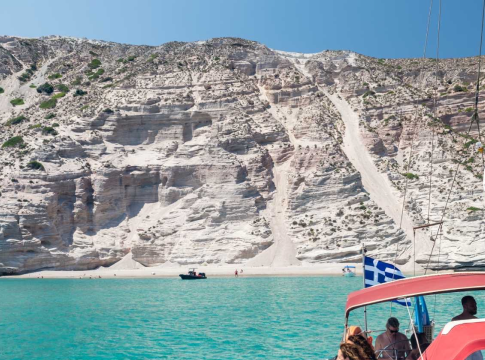
Gerakas is a small sandy beach surrounded by white cliffs on the southern coast of Milos that can only be accessed by boat. Long strips of sand and rock are running down the hillside to meet the see. Take a slide down these natural sandslides. Because of its breathtaking blue water and imposing volcanic cliffs, Gerakas beach is an absolute must-visit and surely one of the best beaches in Milos. The best way to experience this impressive beach is to grab your snorkeling set, plunge into the sea from your boat and swim to the shore.
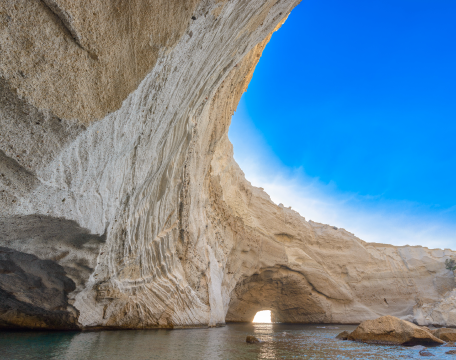
The sea cave of Sykia is located on the west side of Milos and is an impressive natural monument. What makes it special is that part of the roof has collapsed, creating an open round top viewing the blue sky. A natural skylight was created by the fall letting the sun’s rays illuminate the interior of the cave and create beautiful colors. Sykia can be reached only by boat. The cave was named after the fig tree which stands near the roof. On one side of the cave there is a small beach with pebbles, stones and crystal clear waters where visitors can swim and snorkel.
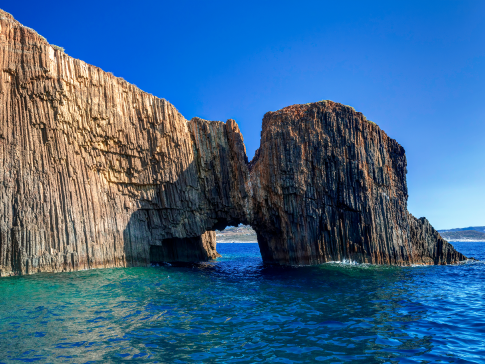
Glaronissia is a small complex of uninhabited islets, located north of Milos Island. Seagulls claimed them as their home. Glaronisia are a rare creation of nature, formed 800 to 700 thousand years ago as a result of volcanic lava geological turbulence. Thousands of upright pentagonal and hexagonal columns, with diagonals of 20-30cm are formed on the andesitic rock.
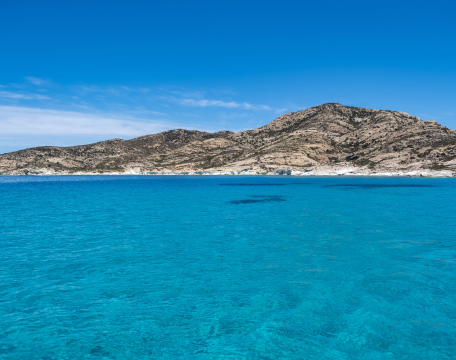
Polyaigos is the largest uninhabited island of the Aegean and one of the largest in the Mediterranean.The rocks that form the coastline of Polyaigos have wonderful colors of white, pink and orange. The most famous beaches are located in the bays of Kato and Ano Mersini, one of them is the “Blue Bay” beach. A bay which looks a bit like an amphitheater with white rocks around the sea. The wild exotic landscapes, the beautiful beaches and the amazing sea make the island an attractive and popular destination.
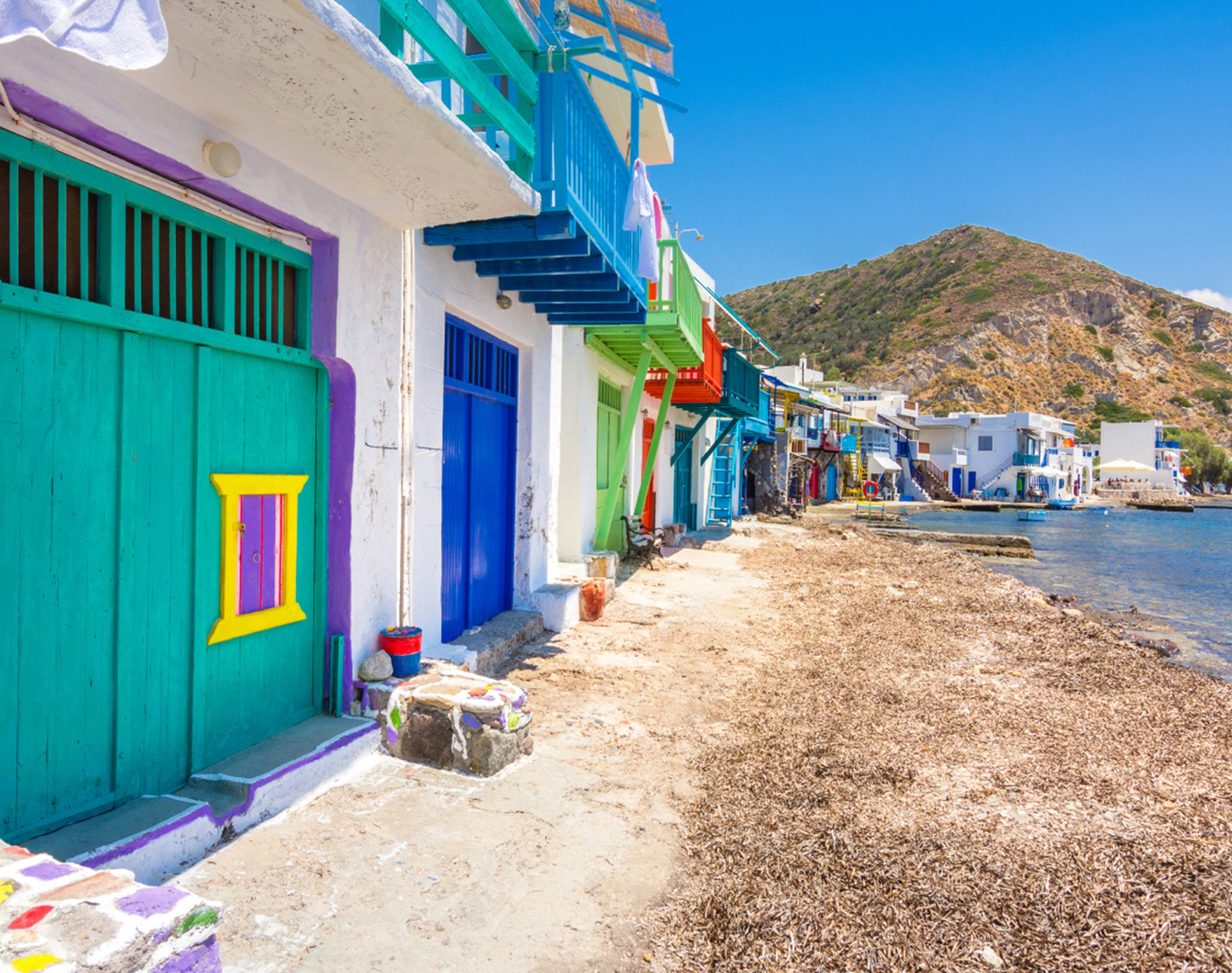
Klima village dates back to around 1100 B.C. when the first settlement at Fylakopi was destroyed. Due to its strategic position in the Aegean Sea, Klima flourished, reaching its peak from the 7th to the 5th centuries B.C. Many travelers visit Klima each day and most head to the waterfront to stroll the stone walkway, admiring the colorful local architecture, or “syrmata”, the quintessential Greek boat houses with apartments above. Visit Klima in the evening and you’ll be saturated in golden light as the sun sets on another day.

The picturesque town of Plaka is the capital of Milos. As it’s built up on a hill, it enjoys beautiful views of the Aegean Sea. Plaka itself is a proper Cycladic town, with narrow cobble-stone streets,white-washed houses and churches,and a Venetian castle. Like most castles in the Cyclades, it is not a typical castle surrounded by walls. It is a fortified settlement, with the outer houses built one next to the other, effectively constituting the exterior wall of the castle. From its beautiful vistas to the brightness of its buildings, contrasted with the splashes of color from the bougainvilleas and various trees, Plaka will not disappoint you.
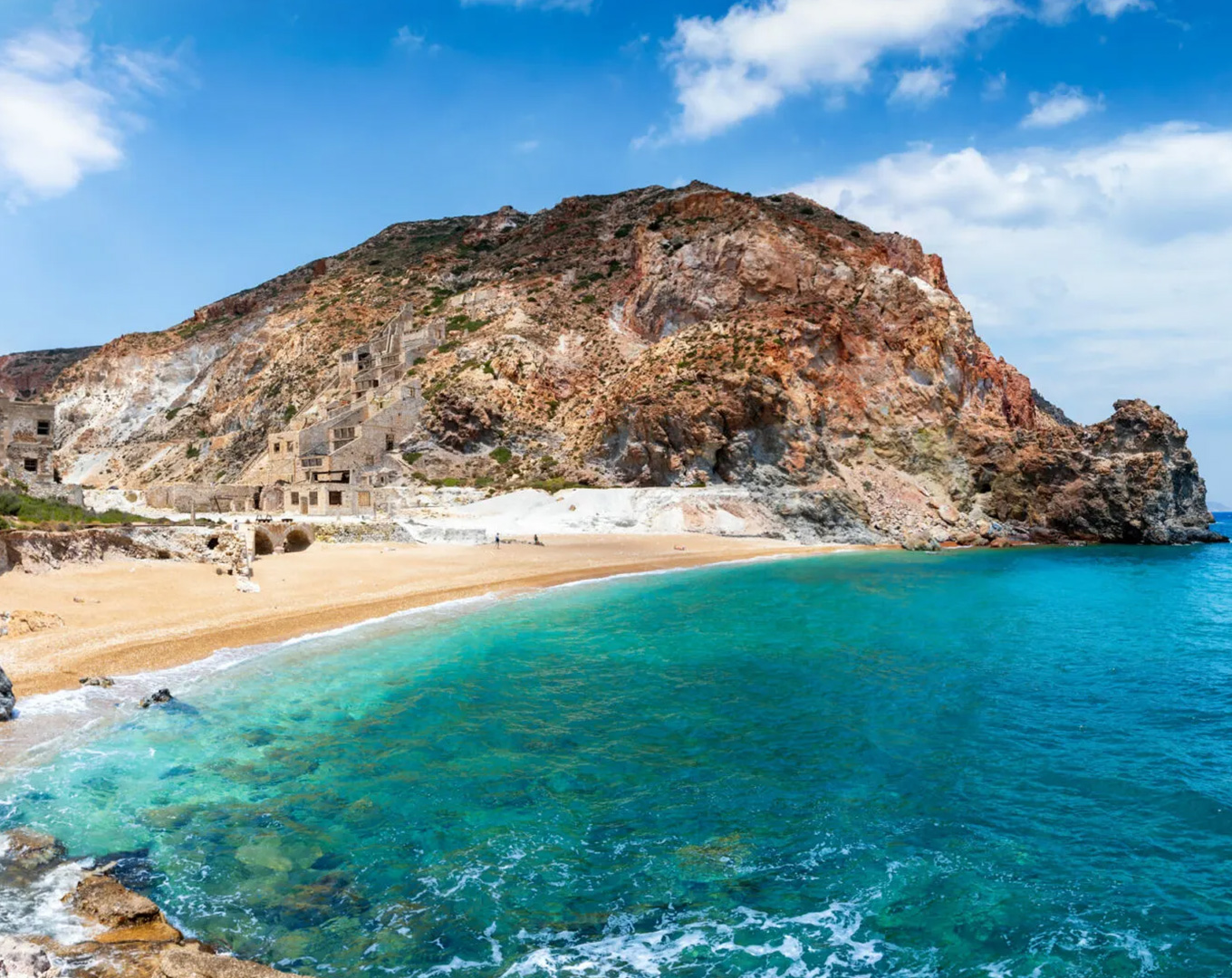
The sulfur mines (called ‘Theiorichia’ in Greek) are located on the east coast of the island, in the Paliorema area. Milos sulfur mines are a tremendously important monument to Greece’s industrial history. The 1930s complex still stands today and the machinery within the buildings has been left there as it was. Arriving at the sulfur mines beach, you will see that it has striking red colored rocks and yellow pebbles, a result of its sulfuric nature. The waters of the beach are emerald and crystal clear, making the entire site look otherworldly and beautiful as if colored by a child.
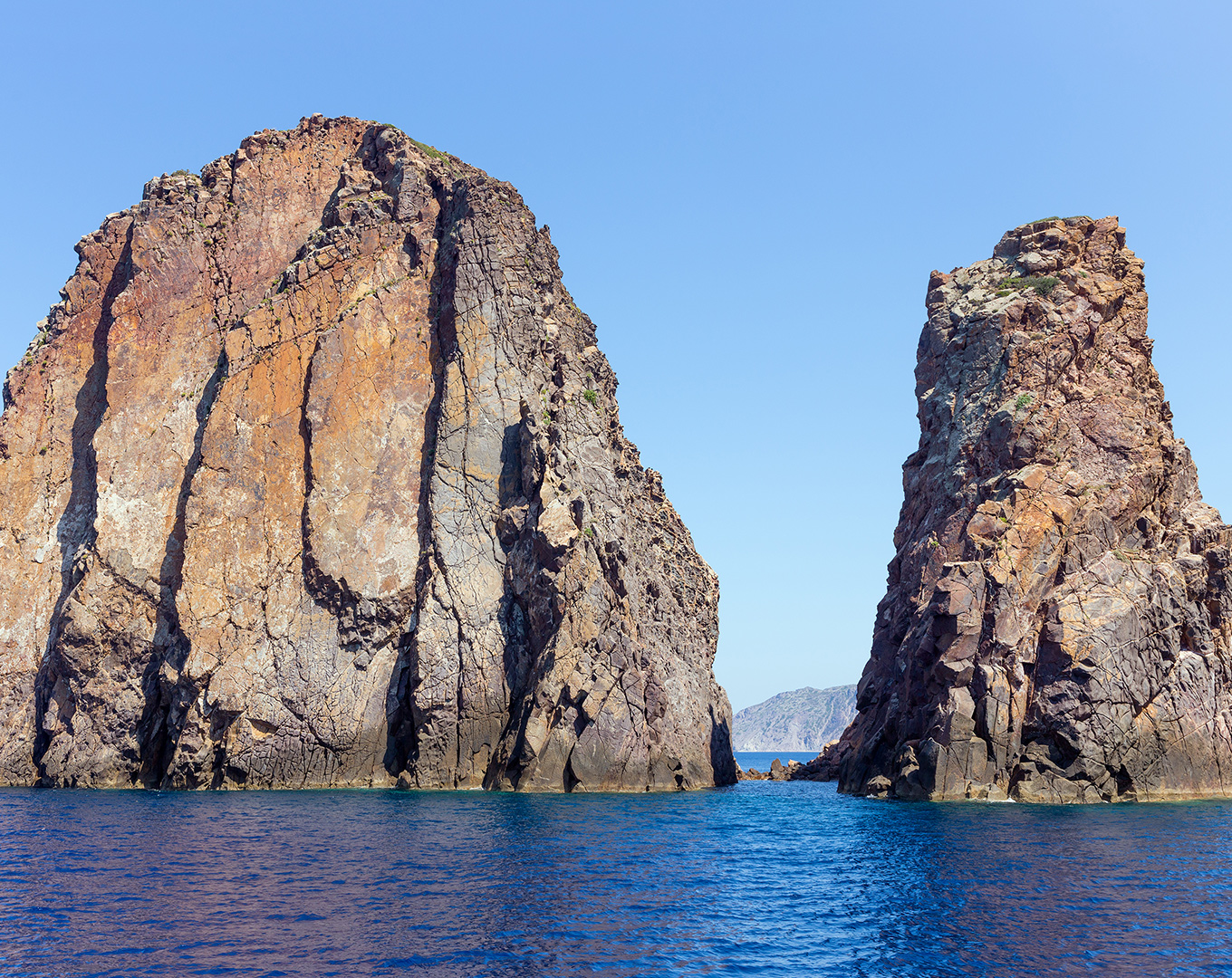
Cape Vani, is located in the northwest part of the island. Cape Vani is very popular because of its historical importance and unique landscape. The old manganese mines were situated in this area, with ruins of administrative buildings, equipment and some tools still visible to this day. The mines started operating sometime in the 1870s and stopped being used in the 1920s, as there was less demand for manganese. The distinctive landscape is defined by massive rocks that emerge out of the water almost vertically, offering an impressive view. The best way to reach Vani is by boat in order to admire this charming site.